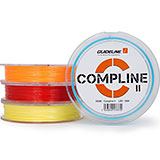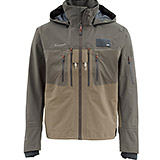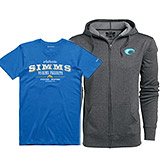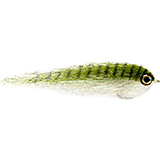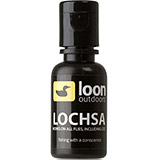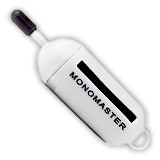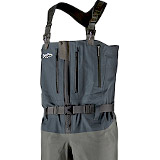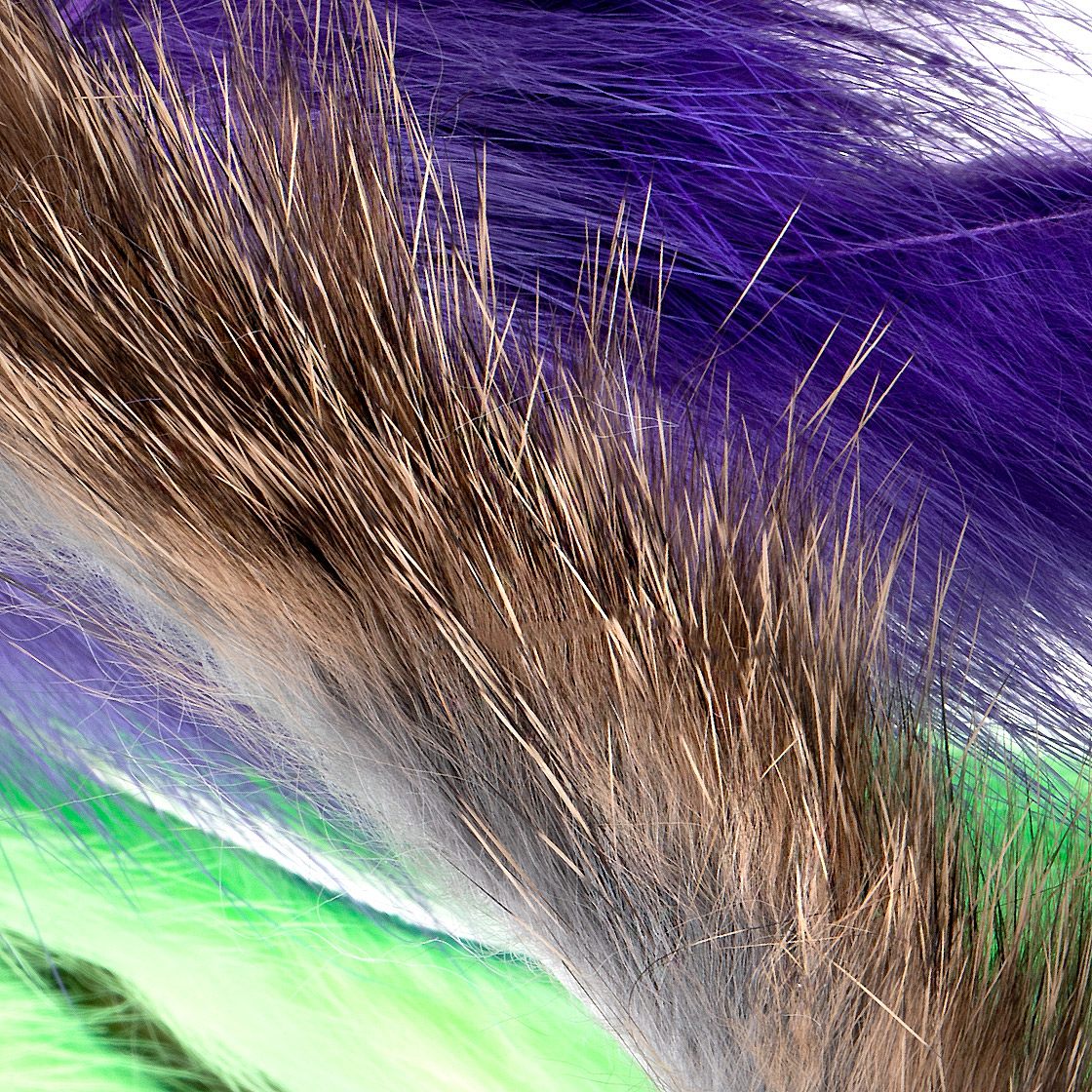Trout season opening: Tips and Tricks

Waiting is over! Trout season 2018 lays around the corner – an event many of us have been passionately looking forward to for as long as five month. Five month! In order to make these first tough days and weeks of the season count however, we sometimes have to take an unconventional path – otherwise all we have to show off is cold feet instead of the a early season trout bending our rod. In this article our colleague Alexander Keus (author of „Nymphenfischen: Geheimnisse entlarvt“) has put together some useful tips and tricks for these first days of the season.
Mid of March, I am walking the banks of my favorite stream. The stream I ended last season’s golden autumn scenery during a sunny, mild dry fly session characterized by active trout sipping small mayflies in gently dissolving swirls from the surface. Now I can hardly recognize it. Naked branches of the bleak looking trees, pale lawns and squished vegetation tell the story of winter. The high discharge has vastly changed the morphology of the river creating new pools, shifting riffles and runs. Next to many other factors these dynamics are highly important for a vivid underwater life since deposited and transported deadwood creates new shelter. The flow dynamics relocate the pebbles of the river and revive the substrate. Yet, even though very relevant for the streams inhabitants these changes can give us a hard time finding the fish especially when the water temperature and thus the trout’s metabolism are low. As if that wasn’t enough, early spring conditions are often coupled with elevated discharge and colored water – not exactly welcoming.
One thing however remained unchanged, namely the abundance of trout with the exception that they are now way less active and rarely willing to leave cover only to collect a tiny larvae or nymph. Thus in this cold season we have to get our fly closer to the fish in order to trigger a reaction and make the long awaited season start count.
Where?
Within the first weeks of the season brown trout are in an energy saving state holding close to the bottom where the friction of the coarse substrate drastically reduces the flow velocity. Only sporadically the trout will forage in fast flowing sections like often observed in summer and autumn. The most interesting fish holding spots in this time of the year are deep runs and pools. In case of an elevated flow also the normally less attractive side habitats are now hot spots for big trout offering a nice combination of low flow velocity and water deeper than usual. Undercut banks and washed out roots are prime spots providing shelter from predators and from the current throughout the year and will thus also produce fish in the early season.
Fishing deep down
In order to effectively fish such structures my first choice has to go to nymph fishing which allows me to systematically scan the water for active fish. Even though the water is most likely colored I prefer to fish upstream to avoid spooking vary trout. Another reason for this upstream approach is that I can much easier, and more importantly very naturally fish my nymph close to the bottom without drag. Obviously the most effective methods that come to mind are tight-line nymphing techniques such as 'French Nymphing' or more general 'Euro Nymphing'. These nymphing methods reduce the drag on the line considerably resulting in a deeper and slower drift which at times can be the only chance to get a grab of a lethargic early season trout. When classically nymphing upstream it is therefore important to limit the amount of fly line to a minimum. This can only be achieved by raising the rod tip high and immediately stripping in slack line to reduce water pressure on the line preventing the fly from sinking and drifting naturally. A minimally tapered leader combined with a long tippet also helps to get the fly into reach of a fish more quickly especially when presented with a Tuck Cast. This easy trick cast makes the fly and leader crash on the surface to additionally allows the nymph to sink more quickly, opposing to a straight line presentation which results in inevitable drag of the line and a delayed drop of the fly. Ground contact of the fly is signalized by a twitching motion of the leader.
Now that the nymph is in the hit zone it is important to regain line tension to detect bites and reduce snagging. This procedure allows the angler to fish in different water depth without the need for a floating bite indicator to be adjusted every other cast to fit the exact water depth. Going without a floating bite indicator provides two further remarkable advantages which is why tight line techniques outcompete indicator nymphing in many instances. Firstly the flow velocity is not homogeneous throughout the water column but high on the surface and low close to the bottom where fish are holding. Hence, a floating indicator (or excessive floating fly line) acts as an anchor point in the fast flowing surface pulling the nymph and preventing a deep natural drift. Secondly, when fishing floating bite indicators we exclusively rely on visual cues to detect bites. Thus very subtle, short takes are rarely noticeable. This stands in contrast to tight line nymphing which mostly relies on feeling the bite with additional visual cues given by twitches or pauses in the drifting monofilament leader – a much more sensitive approach that pays off especially when takes are few and unaggressive. Not only does a straight leader allow us to sense bites but it also enables us to intuit the exact location and drift velocity of the nymph whereas a floating indicator gives us a false image of fly location.
Fly selection
As for the fly choice there are three characteristics I am looking for: weight, silhouette and coloration. The weight of the fly obviously has to be high enough to fish in the correct depth which in the early season lays as close to the bottom as possible. That leaves us with tungsten beaded nymphs preferably tied on jig style hooks in sizes ranging between #12 and #16 to reduce snagging paired with beads between 2,5mm and 4mm according to the fished water depth and flow velocity. In order to promote rapid sinking sparsely tied patterns with a slim silhouette are given priority since bulky flies fall slower and drift more quickly due to the larger surface and volume. Slim flies are however harder to spot for the fish especially in colored water. This is why I usually use hot spotted nymphs with a fluorescent thread collar, bead or a thorax section made of bright dubbing. To further increase the contrast and subsequently the visibility of the fly in turbid water I tend to tie early season flies in a dark ground color too. As a last tweak I recommend using agile materials such as CDC, partridge or hen cape wet fly hackles for a livelier look of the fly.
The rig
My classical indicator nymphing rig is composed of an aggressive short bellied fly line that is capable of transporting heavy nymphs and indicators such as the Guideline Presentation, Lee Wulff Triangle Taper Nymph or Airflo Super-Dri Nymph. The choice of floating indicators is a matter of preference and compromising floatability versus cast-ability staging between hard and soft indicators. First of which floats better but casts slightly less elegantly and vice versa. A 9ft to 12ft tapered leader with a ca. 100cm tippet (0,14 – 0,18mm) concludes the setup.
When utilizing tight line nymphing setups I prefer a longer (5-10m) low stretch monofilament nymphing leader instead or a 12ft tapered leader, depending on the size of the river. However, that leader is coupled with a 1,5m to 2m tippet section. Between the leader and tippet I attach a piece of sighter-material which helps me to follow the drift and detect bites.
Plan B
In case a perfectly presented naturally drifting nymph gets rejected by the fish our last hope is switching to streamer fishing. Talking streamer one immediately thinks down and across. However, when targeting early season trout I like to present streamers passively in a dead drift with occasional tiny twitches. For that I use the same nymphing rig just with a thicker tippet material of above 0.25mm to be on the safe site. After an upstream cast to let the streamer reach the bottom I'll pick up line tension to be able to detect strikes and animate the streamer. At the end of the free drift it’s worth to fish out the swing – be prepared for sudden strikes – here is where the thick tippet material prevents immediate line breakage. Perfect patterns for this variation of streamer fishing are heavily weighted and tied from materials that pulsate and flutter in the current – rabbit zonker strips, marabou and a pinch of flash make for a great pattern. When snags are plenty it pays off to fish string leech style flies to reduce losses. But also the old time classic Wooly Bugger with a large tungsten bead gets the job done more often than not!
So, next time you’re standing along the pale early season river banks searching for browns throw the conventional approach over board. Forget about downstream presentations, skip out on floating indicators and the idea of beautiful casts in tight loops and gently watering dry flies. Try to use the colored water and high discharge to your advantage. Get close into fish holding structure and present your fly low and slow on a tight line for maximum bite detection and depth control. Dry fly sipping trout are soon to be found regularly. Until then give these tips a try – to make the early season count!
Tight lines for your first days on the water in the season and good luck!

















